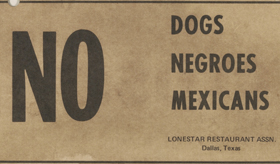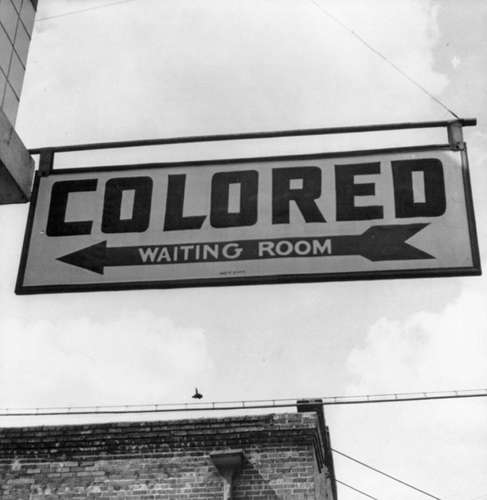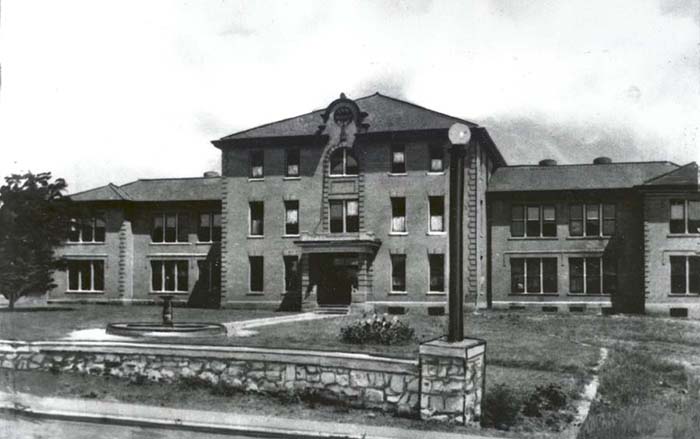CHILDHOOD
Elizabeth “Bessie” Coleman was born in Atlanta, Texas on January 26, 1892. Bessie excelled in school, especially mathematics, and had a love of learning from an early age. However, tragedy struck the family of 14 when, in 1901, Bessie’s father, George Coleman, abandoned his family. Three quarters Cherokee Native American, he fled to Oklahoma, where Cherokee people were granted full civil rights, in an attempt to escape increasing racial discrimination in Texas.

An anti-negro, Mexican and dog sign in Dallas, Texas. Library of Congress

A sign reading "Colored Waiting Room." Esther Bubley/Library of Congress
INCREASING DISCRIMINATION
Increasing racial discrimination in Texas similarly impacted Bessie from an early age. Because she was from both Native American and African American descent she faced many racial barriers throughout her life, including the Jim Crow Laws and Black Codes.
"Black codes were strict local and state laws that detailed when, where and how...people could work, and for how much compensation. The codes appeared throughout the South as a legal way to put black citizens into indentured servitude, to take voting rights away, to control where they lived and how they traveled and to seize children for labor purposes.¨ ("Jim Crow Laws." History.com)
Bessie faced many gender-based barriers throughout her life as well. From a young age, she helped her mother pick cotton and wash laundry to earn extra money to keep the family afloat. All women in the early 20th century had few rights (compared to men), but African-American women had even less—simply due to social prejudice, especially in Southern states such as Texas. "About...thirty-five percent of black women who reported an occupation to the Census [in 1900] said that they worked as a farmer or a farm laborer, as opposed to about...eight percent of white women." ("African Americans in the Twentieth Century." EH.net). After graduating eighth grade top of her class, Bessie immediately went to work as a laundress with the hopes of earning enough money for her secondary and college education.
EDUCATION
By 1910, Bessie had saved enough money to attend the Colored Agricultural and Normal University (now Langston University) in Langston, Oklahoma. However, her money ran out after just one semester and she was forced to return to her job as a laundress in Texas. In 1915, tired of her life as a domestic worker, Bessie moved to Chicago, where a few of her brothers lived. She enrolled at a beauty school, completed a course in manicuring, and found a job at the White Sox Barber Shop-quickly earning a reputation as the “best and fastest manicurist in black Chicago." (Rich, Doris. Queen Bess: Daredevil Aviator). Even with this accomplishment, she dreamed of a more enthralling job and craved adventure.

Page Hall at the Colored Agricultiral and Normal University (now Langston University), Albertype Collection, OHS
"If I can create the minimum of my plans and desires, there shall be no regrets."
~ Bessie Coleman, Everyday Power